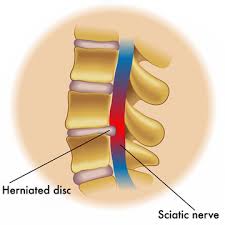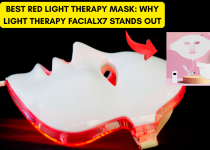Understanding Sciatic Nerve Pain: Causes, Symptoms, and Effective Treatments
Table of Contents

Introduction
Sciatic nerve pain, commonly referred to as sciatica, affects millions of people worldwide. Characterized by discomfort that radiates along the path of the sciatic nerve, which runs from the lower back down through the hips and buttocks and down each leg, sciatica can be debilitating. This article delves into the causes, symptoms, diagnosis, and treatment options for sciatica, providing a comprehensive guide to understanding and managing this painful condition.
Thank you for reading this post, don't forget to subscribe!What is Sciatica?
Sciatica is not a medical diagnosis but a symptom of an underlying medical condition. It typically occurs when the sciatic nerve is compressed or irritated. The most common causes of sciatica include herniated discs, spinal stenosis, or piriformis syndrome. The pain can vary widely, from mild discomfort to severe pain that interferes with daily activities.
Causes of Sciatic Nerve Pain

1. Herniated Discs
One of the leading causes of sciatica is a herniated or slipped disc. Discs act as cushions between the vertebrae in the spine. When a disc herniates, its inner gel-like core can push through the outer layer and press on nearby nerves, including the sciatic nerve.
2. Spinal Stenosis
Spinal stenosis occurs when the spinal canal narrows, placing pressure on the spinal cord and the nerves that exit the spine. This narrowing can be a result of aging, arthritis, or congenital conditions. The pressure can lead to inflammation and pain in the sciatic nerve.
3. Piriformis Syndrome
The piriformis muscle is located in the buttocks, and when it spasms or tightens, it can compress the sciatic nerve. This condition is known as piriformis syndrome and is often caused by prolonged sitting or certain physical activities.
4. Degenerative Disc Disease
As people age, the discs in the spine can degenerate, losing their cushioning ability. This degeneration can lead to nerve compression and sciatica symptoms.
5. Spondylolisthesis
This condition occurs when a vertebra slips out of place and can cause pressure on the sciatic nerve. It can result from a stress fracture in the vertebra or degenerative changes in the spine.
6. Injury or Trauma
Injuries to the spine, whether from an accident or heavy lifting, can lead to sciatica. Fractures or dislocations can directly impact the sciatic nerve.
Symptoms of Sciatic Nerve Pain

The symptoms of sciatica can vary widely depending on the underlying cause and the severity of nerve compression. Common symptoms include:
Diagnosis of Sciatica
Diagnosing sciatica involves a comprehensive approach that includes a detailed medical history, a physical examination, and various diagnostic tests to identify the underlying cause of the symptoms. Here’s a closer look at each step involved in diagnosing sciatica:
1. Medical History Review
The healthcare provider will begin by taking a thorough medical history. This includes:
- Symptom Description: Patients are asked to describe their symptoms in detail, including the location, intensity, and nature of the pain (sharp, burning, tingling, etc.). It’s also important to note if the pain radiates down one leg or if it affects both legs.
- Onset and Duration: Understanding when the symptoms began and how long they have persisted can provide valuable insights. Acute sciatica may result from an injury, while chronic sciatica may indicate underlying degenerative conditions.
- Aggravating and Relieving Factors: Patients are encouraged to identify any activities or positions that worsen or alleviate their pain, which can help pinpoint the underlying cause.
- Previous Medical Conditions: A history of back problems, previous injuries, or conditions such as arthritis or diabetes may influence the diagnosis and treatment plan.
2. Physical Examination
Following the medical history, the healthcare provider will conduct a physical examination to assess:
- Range of Motion: The provider may check how well the patient can move their back, legs, and hips. Limited mobility or pain during specific movements can provide clues about the source of the sciatica.
- Neurological Assessment: A neurological exam involves testing reflexes, muscle strength, and sensation in the legs and feet. This helps determine if nerve compression is affecting function.
- Straight Leg Raise Test: This common test involves lifting the leg while the patient lies on their back. If lifting the leg causes pain that radiates down the leg, it suggests irritation of the sciatic nerve.
3. Imaging Tests
In many cases, healthcare providers will order imaging tests to visualize the spine and surrounding structures. Common imaging tests include:
- X-rays: X-rays are often the first imaging test performed. They can reveal structural issues such as bone spurs, fractures, or alignment problems in the vertebrae. However, X-rays do not show soft tissue issues like herniated discs.
- Magnetic Resonance Imaging (MRI): An MRI provides detailed images of the soft tissues, including the spinal discs and nerves. It can identify herniated discs, bulging discs, spinal stenosis, or any other conditions that might be compressing the sciatic nerve.
- Computed Tomography (CT) Scans: A CT scan may be used if an MRI is not available or if the provider needs more detailed images. CT scans can also help detect disc herniation and other spinal abnormalities.
4. Electromyography (EMG)
Electromyography is a specialized test that measures the electrical activity of muscles. It can help assess whether the sciatic nerve is being compressed or damaged. During an EMG:
- Electrodes are placed on the skin to record electrical activity in muscles as they contract and relax.
- The results can reveal nerve function and help differentiate between sciatica caused by nerve compression and other conditions that may mimic sciatica symptoms, such as peripheral neuropathy.
5. Additional Tests
In some cases, healthcare providers may recommend further tests, such as:
- Blood Tests: These can help identify underlying conditions like infections or inflammatory diseases that may contribute to nerve pain.
- Nerve Conduction Studies: This test measures how well electrical impulses travel through the nerves and can help pinpoint the location and severity of nerve damage.
Treatment Options for Sciatic Nerve Pain
1. Conservative Treatments
Most cases of sciatica can be managed with conservative treatment options, including:
a. Physical Therapy
A physical therapist can design a customized exercise program that strengthens the muscles supporting the spine, improves flexibility, and alleviates pressure on the sciatic nerve.
b. Pain Relief Medications
Over-the-counter medications such as ibuprofen or acetaminophen can help alleviate pain and reduce inflammation. In more severe cases, healthcare providers may prescribe stronger pain medications or muscle relaxants.
c. Hot and Cold Therapy
Applying heat or cold packs to the affected area can provide temporary relief from pain. Cold therapy can reduce inflammation, while heat therapy can relax tight muscles.
2. Alternative Therapies
Several alternative treatments can help manage sciatica symptoms:
a. Chiropractic Care
Chiropractors use spinal manipulation and other techniques to relieve pressure on the sciatic nerve and improve spinal alignment.
b. Acupuncture
This traditional Chinese medicine practice involves inserting thin needles into specific points on the body to relieve pain and improve function.
c. Massage Therapy
Therapeutic massage can help reduce muscle tension and improve circulation, which may alleviate sciatic pain.
3. Surgical Options
If conservative treatments fail to provide relief after several months, surgical options may be considered. Common surgical procedures for sciatica include:
- Microdiscectomy: Removal of a portion of a herniated disc to relieve pressure on the sciatic nerve.
- Laminectomy: Removal of a small section of bone from the vertebra to create more space for the spinal cord and nerves.
- Spinal Fusion: Fusing two or more vertebrae together to stabilize the spine.
Prevention of Sciatic Nerve Pain
While not all cases of sciatica can be prevented, several lifestyle changes can help reduce the risk:
1. Maintain Good Posture
Practicing good posture while sitting, standing, and lifting can help reduce strain on the spine. Ergonomic chairs and desks can also promote better alignment.
2. Regular Exercise
Engaging in regular physical activity can strengthen the muscles that support the spine and improve overall flexibility. Low-impact exercises, such as walking, swimming, or yoga, can be particularly beneficial.
3. Stretching
Incorporating stretching exercises into your daily routine can improve flexibility and reduce the risk of injury. Focus on stretches that target the lower back, hips, and hamstrings.
4. Avoid Prolonged Sitting
Taking regular breaks to stand up and move around can help prevent pressure on the sciatic nerve. If your job requires long periods of sitting, consider using a standing desk or ergonomic chair.
5. Weight Management
Maintaining a healthy weight can reduce the strain on your spine and lower the risk of developing conditions that can lead to sciatica.
Sciatic nerve pain can be a challenging condition, but understanding its causes, symptoms, and treatment options can empower individuals to seek effective relief. By adopting preventive measures and working with healthcare professionals, many people can manage their symptoms and improve their quality of life. If you suspect you have sciatica, don’t hesitate to consult with a healthcare provider to explore the best treatment options for your specific situation.
Introducing AriaLeif: A Revolutionary Solution for Sciatic Nerve Pain
If you’re one of the millions suffering from sciatic nerve pain, you know how debilitating it can be. Fortunately, innovative solutions like AriaLeif are making waves in the world of pain management. This product is designed to provide effective relief for those experiencing sciatica, helping to alleviate pain and improve quality of life.
What is AriaLeif?
AriaLeif is a therapeutic device that utilizes advanced technology to target and soothe the underlying causes of sciatic nerve pain. Combining elements of neuromuscular stimulation and heat therapy, AriaLeif offers a multi-faceted approach to pain relief.
How Does AriaLeif Work?
- Neuromuscular Stimulation: AriaLeif uses gentle electrical impulses to stimulate the muscles and nerves in the affected area. This stimulation can help block pain signals from reaching the brain, providing immediate relief. It also promotes increased blood flow, which aids in the healing process.
- Heat Therapy: The device incorporates soothing heat to relax tight muscles and enhance circulation. Heat therapy can reduce inflammation and stiffness in the lower back and legs, making it an effective treatment for sciatica.
- Customizable Settings: AriaLeif offers adjustable settings to cater to individual comfort levels and pain severity. Users can easily customize the intensity of the stimulation and heat to find the perfect balance for their needs.
- Portable and Easy to Use: Designed with convenience in mind, AriaLeif is lightweight and portable, allowing users to manage their pain on the go. Whether at home, at work, or while traveling, it’s easy to integrate into your daily routine.
Benefits of Using AriaLeif for Sciatic Nerve Pain
- Non-Invasive Relief: Unlike medications or invasive procedures, AriaLeif offers a drug-free approach to pain management, reducing the risk of side effects.
- Targeted Treatment: The device is specifically designed to target the sciatic nerve area, providing localized relief where it’s needed most.
- Enhanced Recovery: By promoting blood flow and muscle relaxation, AriaLeif can support faster recovery and rehabilitation, allowing users to return to their daily activities more quickly.
- User-Friendly: With simple controls and an ergonomic design, AriaLeif is accessible to users of all ages and technical abilities.
Conclusion
Arialeif represents a promising advancement in the management of sciatic nerve pain. By combining neuromuscular stimulation and heat therapy, it addresses both the symptoms and underlying causes of sciatica, offering users a pathway to relief and recovery. If you’re seeking a non-invasive, effective solution for your pain, consider incorporating Arialeif into your treatment plan. Always consult with a healthcare provider to ensure it’s the right option for you.



